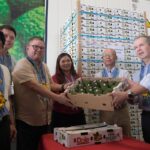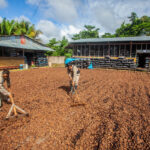What are non-conventional renewable energies?

The content of this article 'What are non-conventional renewable energies?' was prepared by www.ecoinventos.com and has been revised and republished by FreshFruitPortal.com.
Renewable energies are those that come from virtually inexhaustible natural sources, either because of the immense amount of energy they contain, or because they are capable of regeneration through natural means.
Renewable energy typically supplies power in four major areas: power generation, air and water heating/cooling, transportation, and rural energy services (off-grid).
The term renewable energy refers to forms of energy that regenerate rapidly with sources of these forms of energy called renewable energy resources.
Renewable energy: Solar energy
Solar energy is a source of renewable energy, obtained from the use of electromagnetic radiation from the Sun.
There are three types of solar energy: passive, thermal and photovoltaic.
Solar energy is a source of renewable energy, obtained from the use of electromagnetic radiation from the Sun through photovoltaic solar panels.

A solar thermal power plant is an industrial installation in which, from the heating of a fluid by means of solar radiation and its use in a conventional thermodynamic cycle, the necessary power is produced to move an alternator for the generation of electrical energy, as in a classic thermal power plant.
It consists of the thermal use of solar energy to transfer it and store it in a heat-carrying medium, generally water.
The passive solar building design is the set of techniques aimed at harnessing solar energy directly, without transforming it into another type of energy for immediate use or for storage without the need for mechanical systems.
Renewable energy: Wind power
Wind energy is the energy obtained from the wind, or the kinetic energy created by the effect of air currents, and is converted into other useful forms of energy for human activities.

To obtain electricity, the movement of the blades drives an electrical generator that converts the mechanical energy of the rotation into electrical energy.
Electricity can be stored in batteries or be poured directly into the grid. The speed of rotation of the blade is 12 to 19 revolutions per minute.
Renewable energy: Tidal and wave energy
The wave energy, or wave-power, is the energy that allows the production of electricity from mechanical energy generated by the movement of the waves.

The wave energy is obtained with the tide: by its junction to an alternator can be used the system for generating electricity, transforming wave energy into electrical energy, a safer and more usable energy form.
Renewable energy: Hydraulic power
Hydropower, water power or hydropower is one that is obtained from the use of kinetic and potential energy of water streams, waterfalls or tides.
Renewable energy: Geothermal energy
Geothermal energy is the energy that can be obtained by using the heat inside the Earth.

Renewable energy: Biomass
Biomass is one of the main sources of renewable energy in many areas of the planet. Biomass has the character of renewable energy since its energy content ultimately comes from the solar energy fixed by plants in the photosynthetic process. This energy is released to break the bonds of organic compounds in the combustion process, resulting in carbon dioxide and water.

It is one of the renewable energy sources with the most growth potential. The generation system is based on the simple steam or Rankine cycle.
- Transportation and treatment
By-products such as those from the production of oil, the pruning of the olive grove or the cultivation of cotton ... reach the plant where they are separated according to their size.
- Fuel dosage
The biomass already treated reaches the boiler by dosers that regulate the fuel input to always maintain the proper combustion conditions (temperature, excess air, etc.).

- Combustion
The biomass is burned in the boiler, raising the temperature and converting the water in the pipes into steam. This circuit first passes through an economizer that begins to heat the water before entering the boiler, optimizing the process.
- Elimination of residues
The ashes that remain from the combustion reach an ashtray located under the boiler, and from there they are reused to later be used in other processes. The resulting gases are filtered to avoid air pollution.
- Recovery of water
The water, after passing through the boiler, turning into steam and moving the turbine, condenses again and reaches a reservoir. The cycle begins again with the treatment of the feed water to the boiler using systems such as reverse osmosis.
- Steam turbine
The water vapor passes through nozzles that reduce its pressure, increasing speed. This flow turns the turbine blades and transforms the steam energy into mechanical energy. A generator takes advantage of this force to convert it into electricity.
- High voltage electricity
The electrical energy from the generator passes to the transformer, which increases the voltage of the current by means of electromagnetic induction. The transformer is connected to the conventional electrical network.
















































